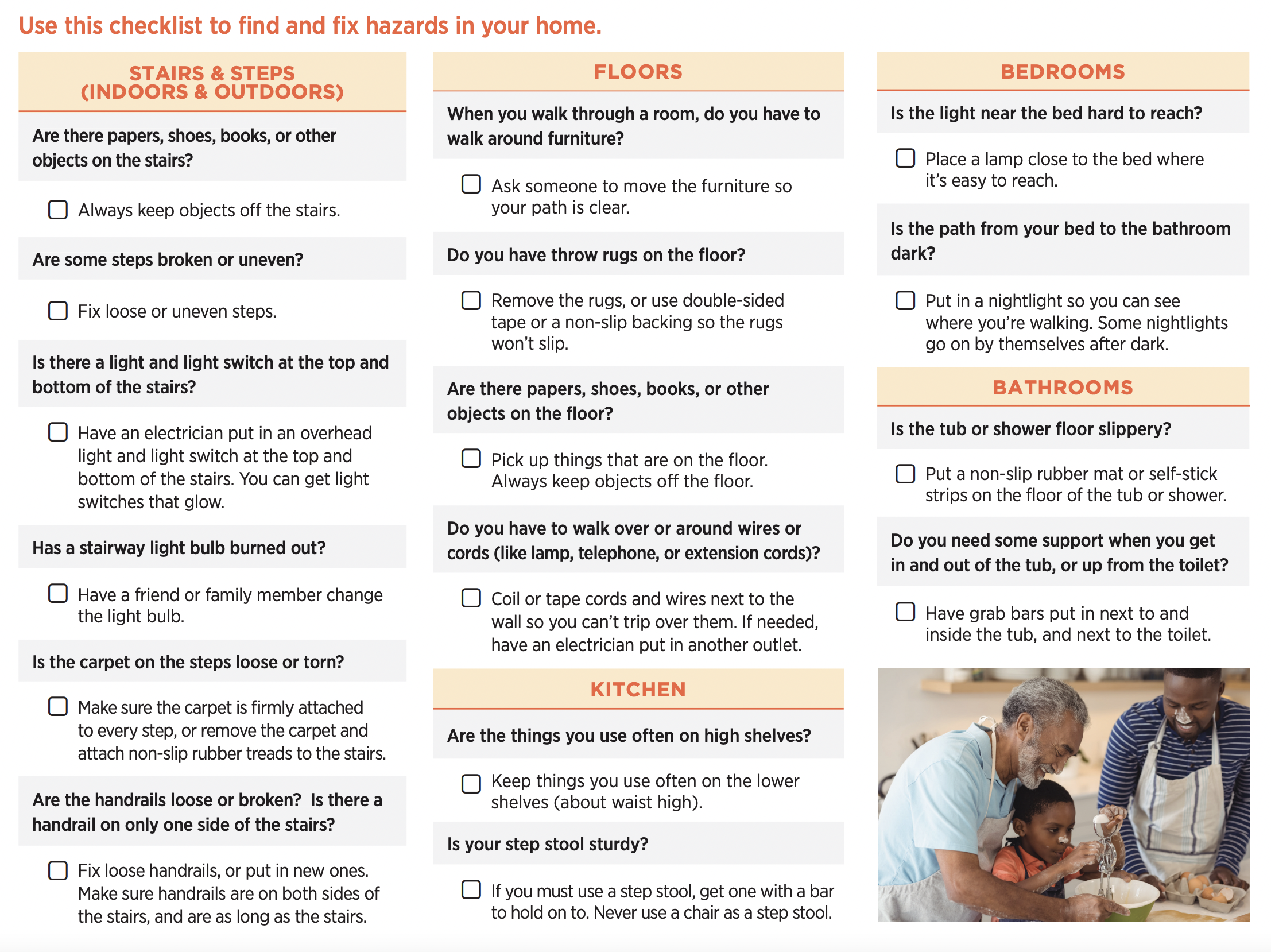Top Guidelines Of Dementia Fall Risk
5 Easy Facts About Dementia Fall Risk Explained
Table of ContentsThe Definitive Guide for Dementia Fall RiskThe Only Guide for Dementia Fall RiskGetting My Dementia Fall Risk To WorkAbout Dementia Fall Risk
A loss risk evaluation checks to see just how likely it is that you will drop. The analysis typically consists of: This includes a collection of inquiries about your total wellness and if you have actually had previous falls or issues with equilibrium, standing, and/or walking.STEADI includes screening, evaluating, and intervention. Treatments are recommendations that might decrease your danger of falling. STEADI includes three steps: you for your threat of succumbing to your threat variables that can be enhanced to attempt to prevent falls (for example, balance issues, impaired vision) to decrease your danger of falling by making use of effective approaches (for instance, offering education and sources), you may be asked numerous questions consisting of: Have you dropped in the past year? Do you really feel unstable when standing or walking? Are you bothered with falling?, your service provider will certainly examine your strength, balance, and stride, utilizing the adhering to loss assessment tools: This examination checks your gait.
If it takes you 12 secs or more, it may suggest you are at higher danger for an autumn. This examination checks strength and equilibrium.
Move one foot halfway onward, so the instep is touching the huge toe of your other foot. Move one foot completely in front of the other, so the toes are touching the heel of your other foot.
Dementia Fall Risk Can Be Fun For Anyone
The majority of falls occur as an outcome of numerous adding variables; as a result, handling the risk of dropping begins with determining the aspects that contribute to drop risk - Dementia Fall Risk. Some of the most pertinent danger aspects consist of: History of previous fallsChronic medical conditionsAcute illnessImpaired stride and balance, reduced extremity weaknessCognitive impairmentChanges in visionCertain high-risk medicines and polypharmacyEnvironmental factors can likewise boost the danger for drops, including: Insufficient lightingUneven or harmed flooringWet or slippery floorsMissing or harmed hand rails and grab barsDamaged or incorrectly fitted equipment, such as beds, wheelchairs, or walkersImproper usage of assistive devicesInadequate guidance of individuals staying in the NF, consisting of those that show aggressive behaviorsA successful autumn danger administration program needs a thorough clinical analysis, with input from all members of the interdisciplinary group

The care plan must also consist of interventions that are system-based, such as those that promote a risk-free environment (suitable lights, handrails, order bars, and so on). The performance of the treatments need to be examined occasionally, and the treatment plan revised as needed to mirror modifications in the autumn threat analysis. Applying a loss risk management system making use of evidence-based finest method can decrease the prevalence of falls in the NF, while restricting the potential for fall-related injuries.
Unknown Facts About Dementia Fall Risk
The AGS/BGS standard suggests evaluating all adults aged 65 years and older for autumn threat annually. This screening contains asking patients whether they have fallen 2 or even more times in the previous year or sought clinical attention for a loss, or, if they have actually not dropped, whether they really feel unstable when strolling.
People that have actually fallen when without injury must have their balance and gait reviewed; those with stride or balance irregularities must receive added evaluation. A history of 1 fall without injury and without gait or balance problems does not warrant additional analysis past continued yearly autumn threat testing. Dementia Fall Risk. A fall danger assessment is required as component of the Welcome to Full Article Medicare assessment

What Does Dementia Fall Risk Mean?
Recording a falls history is one of the top quality signs for fall prevention and management. An essential component of risk analysis is a medication evaluation. A number of courses of medications increase fall danger (Table 2). Psychoactive medicines specifically are independent predictors of falls. These medicines often tend to be sedating, alter the sensorium, and impair equilibrium and stride.
Postural hypotension can frequently be reduced by minimizing the dose of blood pressurelowering drugs and/or stopping medications that have orthostatic hypotension as an adverse effects. Use above-the-knee assistance hose and copulating the head of the bed raised may also lower postural reductions in blood stress. The suggested elements of a fall-focused physical evaluation are displayed in Box 1.

A TUG time higher than or equal to 12 secs recommends high autumn danger. Being not able to website link stand up from a chair of knee height without using one's arms suggests enhanced autumn danger.